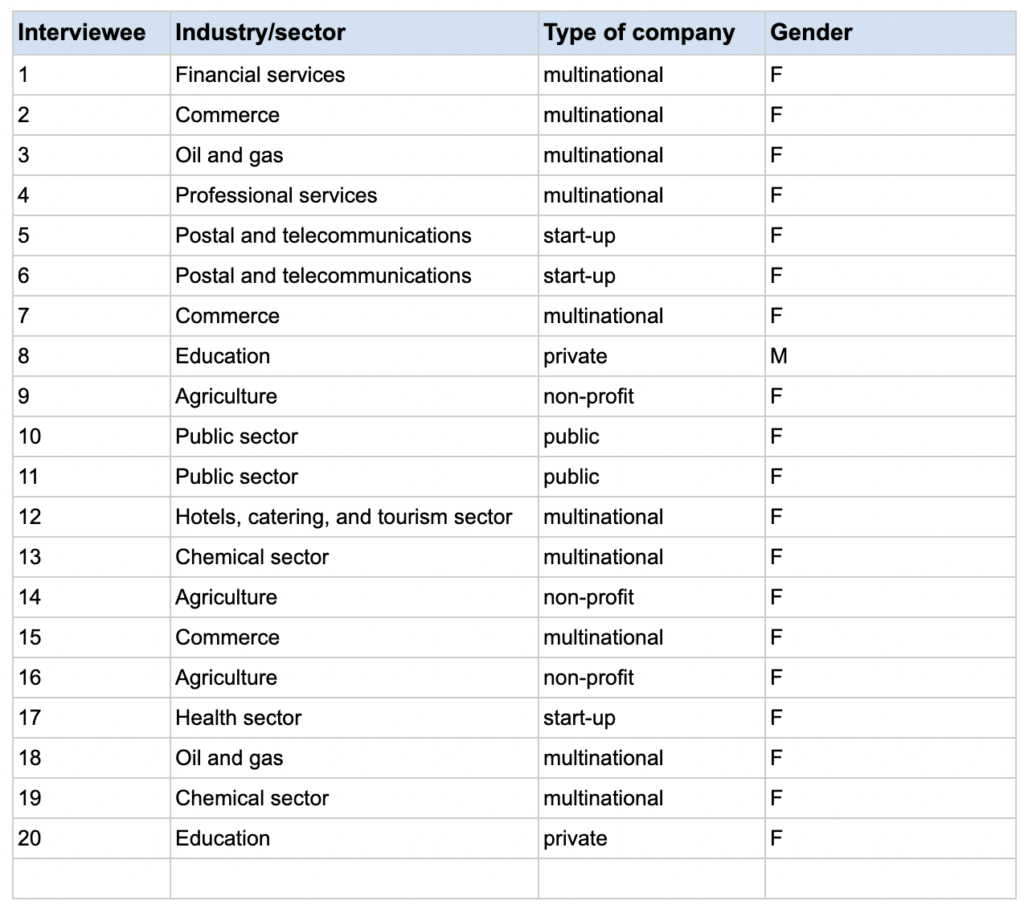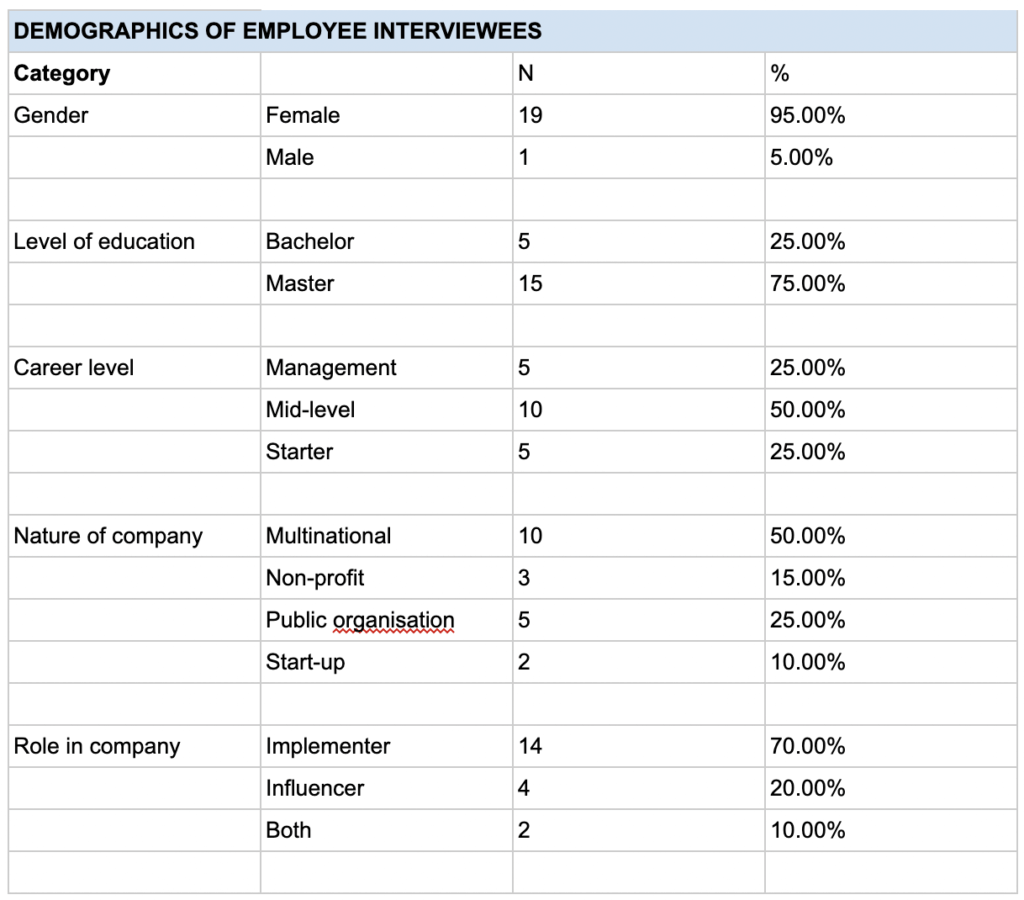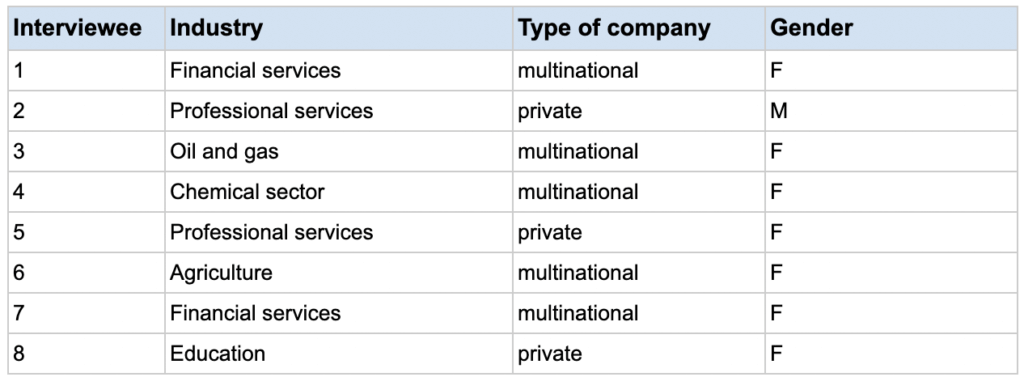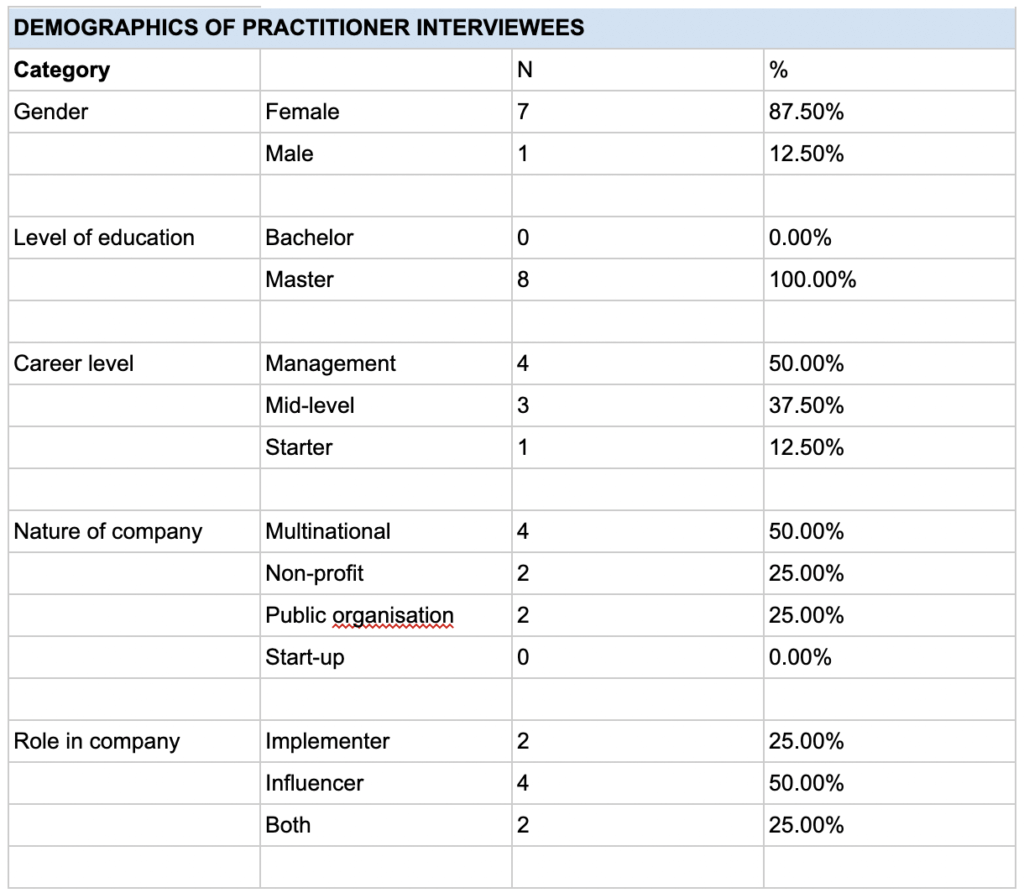This blogpost is part of the “Belonging is a mindset“ blog series derived from my academic research on ‘internal communication and belonging in the virtual workplace’ for the Rotterdam School of Management, Erasmus University. The data from this study was collected from new hires who started their jobs in the middle of the pandemic and internal communication practitioners. This blogpost is part of the methodology.
The main data for this research came from 20 newly-hired employees from Netherlands-based organisations. These employees were hired between March 2020 – June 2021 when working from home was forced to continue in the Netherlands. With on and off lockdowns, these employees were onboarded only virtually and have not met their colleagues face-to-face as they would have before the pandemic hit.
I applied a stakeholder view (Cornelissen 2017) in this matter, assuming that employees can best determine which strategies resonate with them. Their input, as primary stakeholders of an organisation’s internal communication, appears very useful for current and future internal communication practice.
New hires
Below is a table that provides information on the industries where employees were working at the time of the interview. The interviewees were numbered according to the date when the interviews took place.

In all, 19 women and 1 man were interviewed. Fifty percent of the interviewees come from multinationals, while the other 50% consists of employees in start-ups, public services, and foundations. All of the companies where these employees work or worked, do business with other countries, or have offices in other countries.
Below are the demographics of the employee interviewees:

All participants were above 18 years of age and 100% of them finished a Bachelor’s degree. While the original plan was to recruit only newly-hired employees in Netherlands-based organisations with 1000+ employees, two of the participants come from start-ups. I was interested in interviewing them as well since they conduct business with or have locations in countries outside of the Netherlands. Twenty-five percent of the participants were leading teams at the time of the interview. They also considered themselves influencers.
Some of the employee participants moved to two or three jobs during the corona period. This gave me insight to the experiences of 20 participants in 25 organisations.
Internal communication professionals
To validate results and compare them with current internal communication practice, IC professionals were also interviewed. A total of eight IC professionals showed interest in the research and shared their experiences and ideas in internal communication, belonging, and the virtual workplace.

Seven women and one man were interviewed. Two of them were independent IC professionals, five were working for multinationals at the time of the interview and one worked for the education sector. One of them has been working remotely for more than a decade.
Below are the demographics of these practitioner participants:

Interview guides
Interview questions were derived from the integrative framework for belongingness proposed by Allen et al. (2021). The factors that McClure and Brown (2008) mentioned were also taken into consideration.
A primary list of questions was prepared to guide the interviews.
Since semi-structured interviewing was applied, this guide was not always used from beginning to end, particularly when answers that interviewees provided cues to probe further.
The interviews took place between June and August 2021. All interviews were conducted anonymously to make the interviewees feel more secure and ensure that they shared necessary information which included their innermost feelings and frustrations. The shortest interview lasted 45 minutes and the longest took 120 minutes. The interviews were recorded using a transcription app called Otter.ai after interviewees gave their permission. Interviewees who expressed interest in the interview transcription were shown the transcription.
Next up
In the next blogpost, I will present what the interviewees perceive as what works in the virtual workplace.
References
- You will find a full list of references here.



